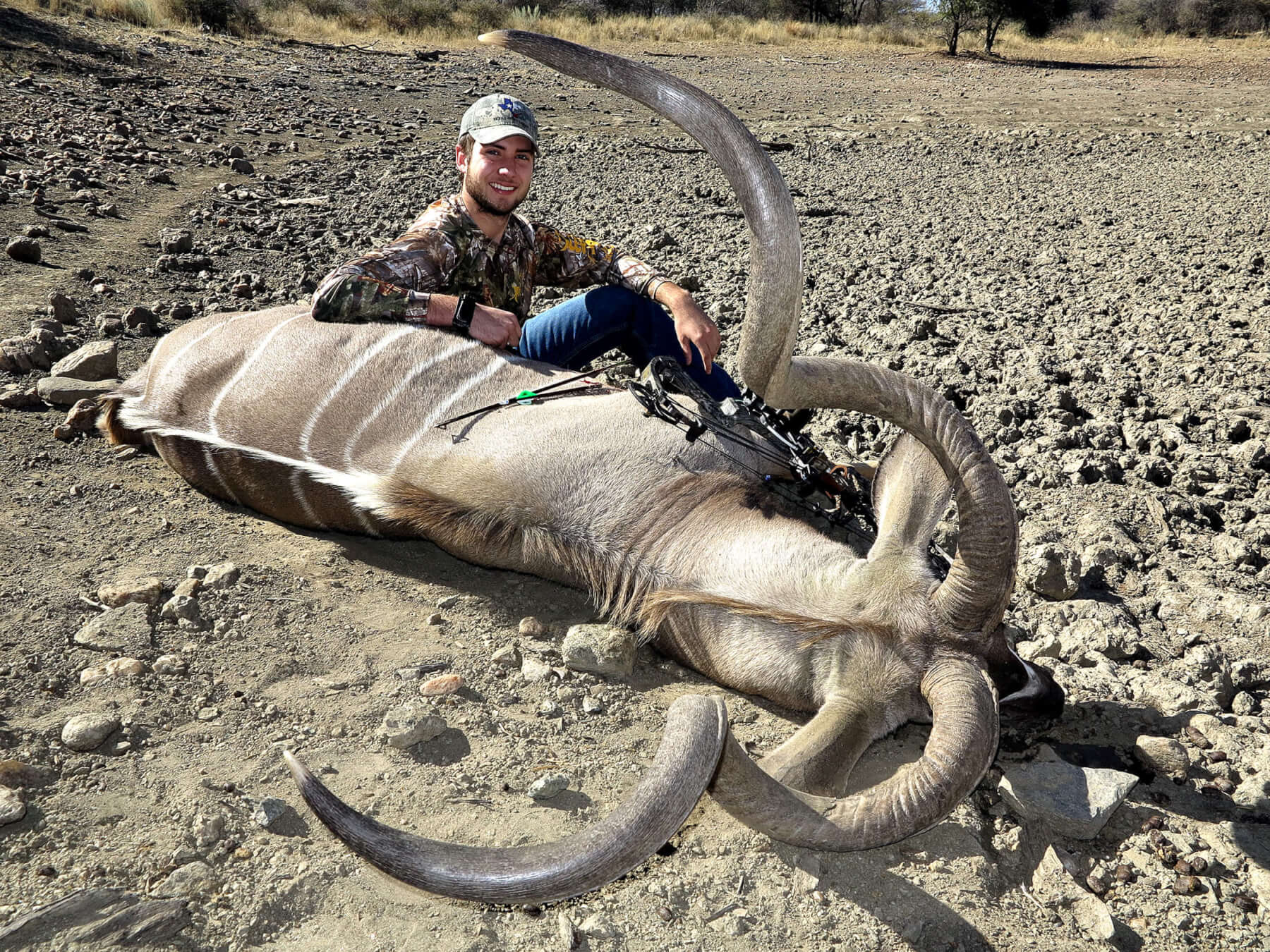Greater Kudu live in areas characterized by dense bushes or in the forests, featuring white lateral stripes and spots on their body. They can be bluish gray, grayish brown or colored like rust. They have a mane on a dorsal (back) side of the body, which follows the line of the spine. This characteristic coloration of their body provides protection against the predators. When the Greater Kudu sense danger, it becomes motionless. Its body color blends with the environment and predators cannot recognize it easily.
The rut begins during the month of May and lasts until late late June, offering some truly exciting hunts for a big bull. You can expect to hunt a bull with a horn size of over 50” and occasionally a lucky hunter gets rewarded with the “holy grail”. A bull with horns measuring 60” or bigger. It is by far one of the most sought after trophy animals to be hunted by our hunting clients.




